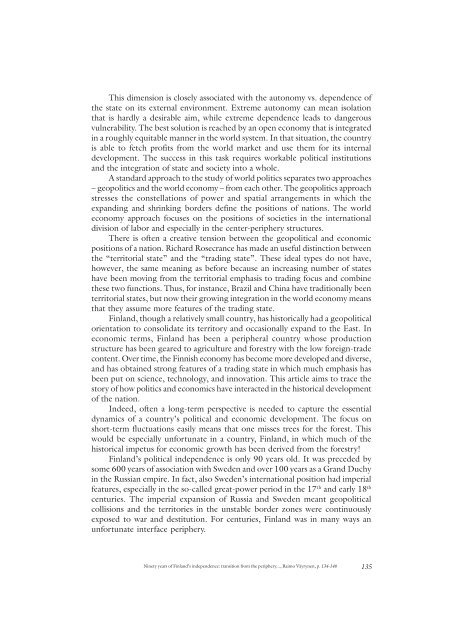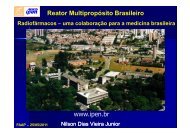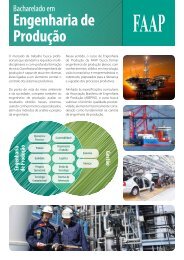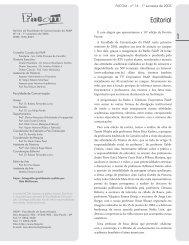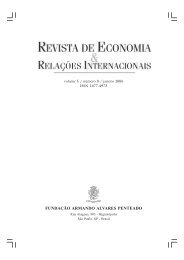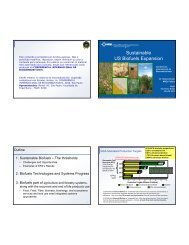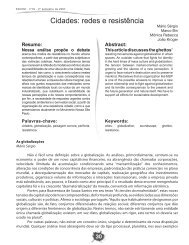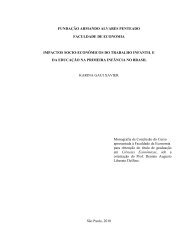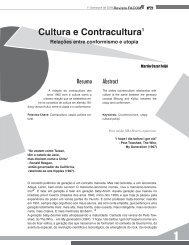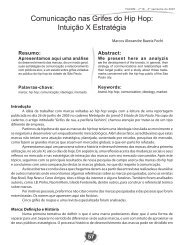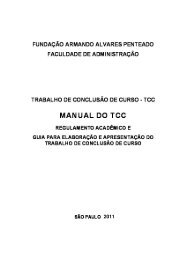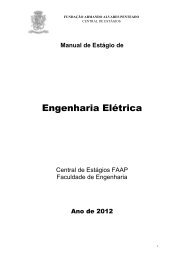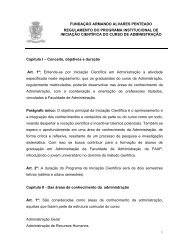Revista Economia n. 13.pmd - Faap
Revista Economia n. 13.pmd - Faap
Revista Economia n. 13.pmd - Faap
You also want an ePaper? Increase the reach of your titles
YUMPU automatically turns print PDFs into web optimized ePapers that Google loves.
This dimension is closely associated with the autonomy vs. dependence of<br />
the state on its external environment. Extreme autonomy can mean isolation<br />
that is hardly a desirable aim, while extreme dependence leads to dangerous<br />
vulnerability. The best solution is reached by an open economy that is integrated<br />
in a roughly equitable manner in the world system. In that situation, the country<br />
is able to fetch profits from the world market and use them for its internal<br />
development. The success in this task requires workable political institutions<br />
and the integration of state and society into a whole.<br />
A standard approach to the study of world politics separates two approaches<br />
– geopolitics and the world economy – from each other. The geopolitics approach<br />
stresses the constellations of power and spatial arrangements in which the<br />
expanding and shrinking borders define the positions of nations. The world<br />
economy approach focuses on the positions of societies in the international<br />
division of labor and especially in the center-periphery structures.<br />
There is often a creative tension between the geopolitical and economic<br />
positions of a nation. Richard Rosecrance has made an useful distinction between<br />
the “territorial state” and the “trading state”. These ideal types do not have,<br />
however, the same meaning as before because an increasing number of states<br />
have been moving from the territorial emphasis to trading focus and combine<br />
these two functions. Thus, for instance, Brazil and China have traditionally been<br />
territorial states, but now their growing integration in the world economy means<br />
that they assume more features of the trading state.<br />
Finland, though a relatively small country, has historically had a geopolitical<br />
orientation to consolidate its territory and occasionally expand to the East. In<br />
economic terms, Finland has been a peripheral country whose production<br />
structure has been geared to agriculture and forestry with the low foreign-trade<br />
content. Over time, the Finnish economy has become more developed and diverse,<br />
and has obtained strong features of a trading state in which much emphasis has<br />
been put on science, technology, and innovation. This article aims to trace the<br />
story of how politics and economics have interacted in the historical development<br />
of the nation.<br />
Indeed, often a long-term perspective is needed to capture the essential<br />
dynamics of a country’s political and economic development. The focus on<br />
short-term fluctuations easily means that one misses trees for the forest. This<br />
would be especially unfortunate in a country, Finland, in which much of the<br />
historical impetus for economic growth has been derived from the forestry!<br />
Finland’s political independence is only 90 years old. It was preceded by<br />
some 600 years of association with Sweden and over 100 years as a Grand Duchy<br />
in the Russian empire. In fact, also Sweden’s international position had imperial<br />
features, especially in the so-called great-power period in the 17 th and early 18 th<br />
centuries. The imperial expansion of Russia and Sweden meant geopolitical<br />
collisions and the territories in the unstable border zones were continuously<br />
exposed to war and destitution. For centuries, Finland was in many ways an<br />
unfortunate interface periphery.<br />
Ninety years of Finland’s independence: transition from the periphery..., Raimo Väyrynen, p. 134-146<br />
135


